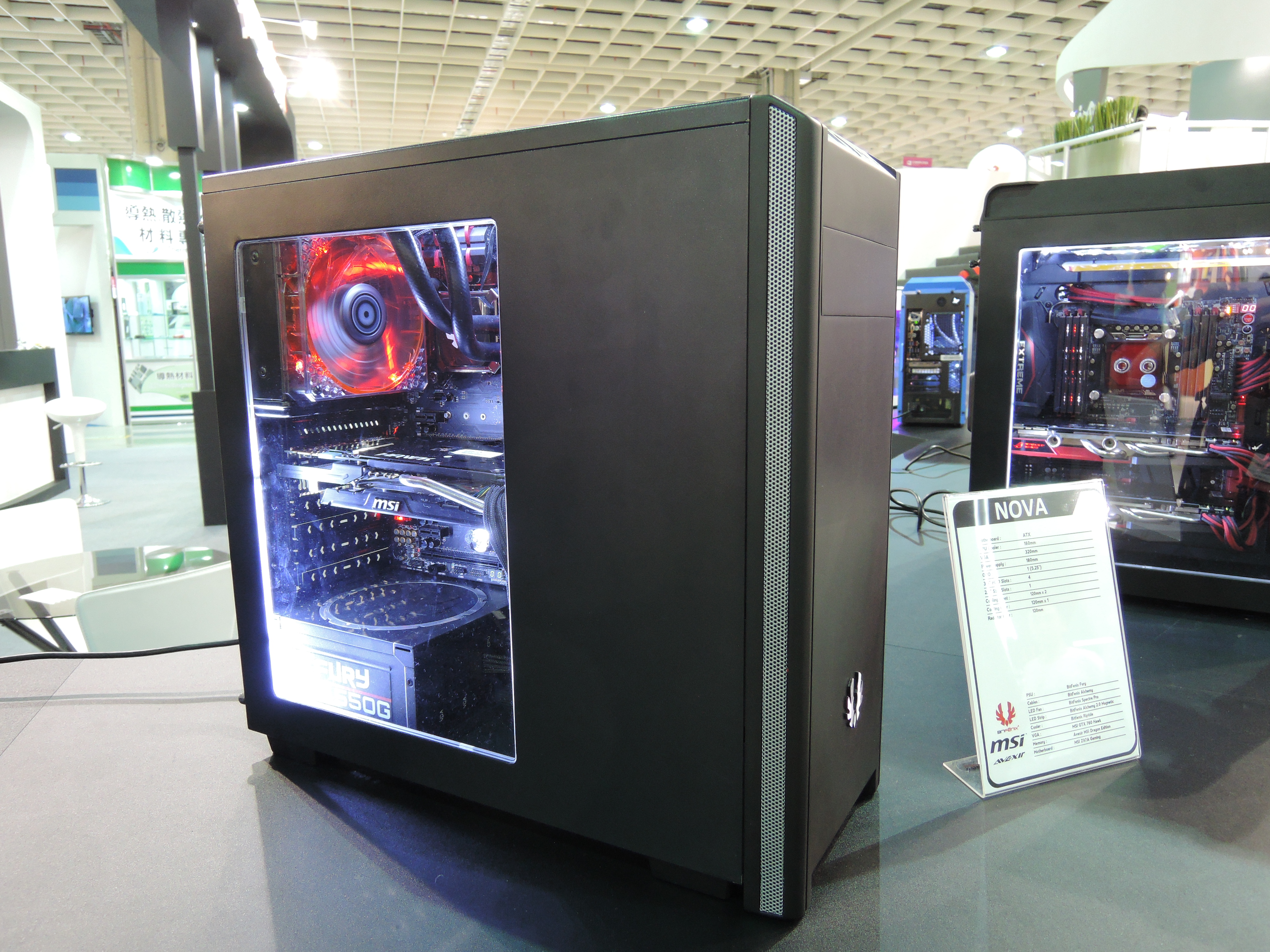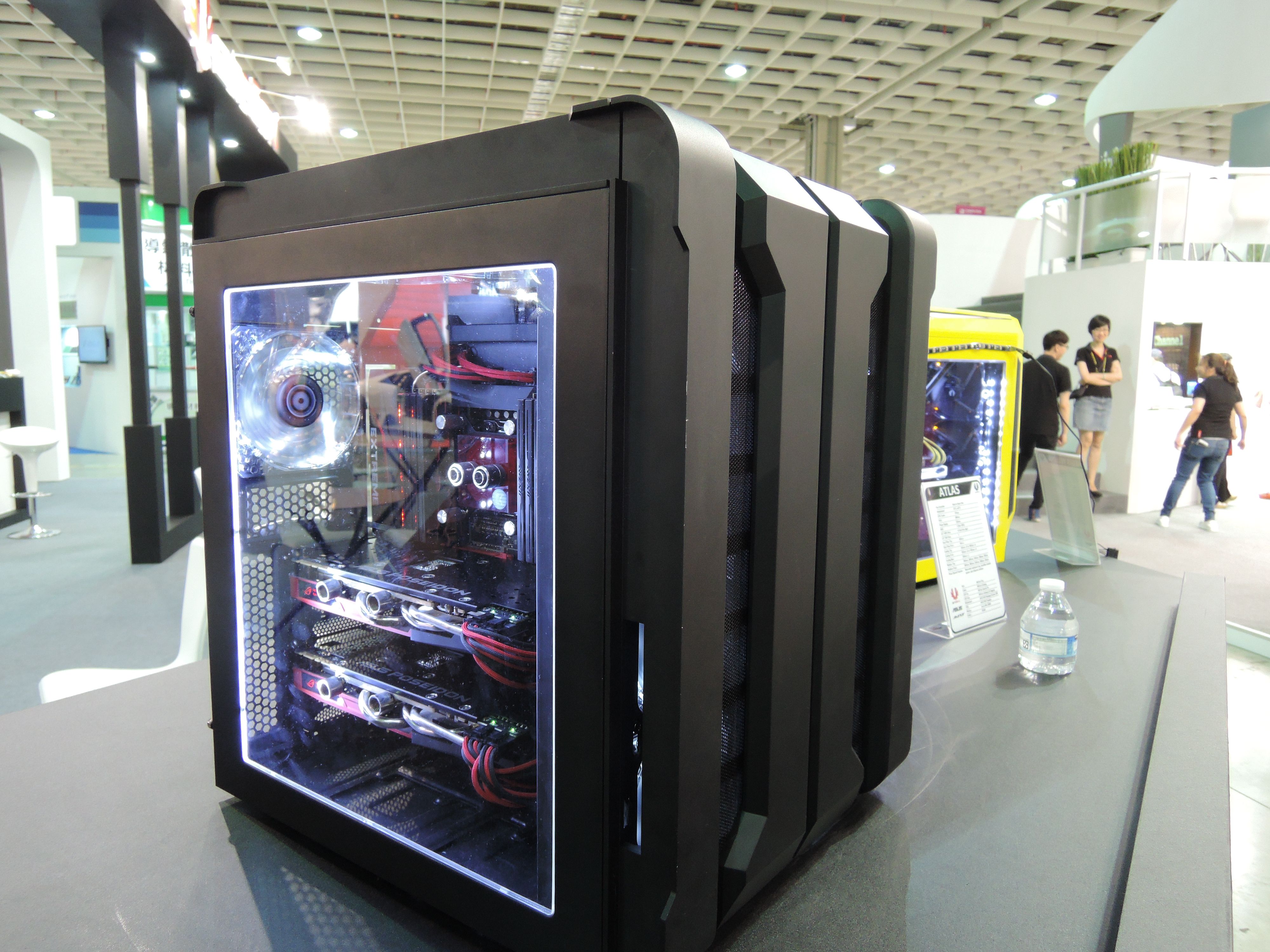BitFenix Shows Off Pandora ATX, Nova, And Atlas Enclosures At Computex
BitFenix showed off three new cases at Computex 2015, all of which are completely different from one another.
At Computex 2015, BitFenix had three new cases on display – the Pandora ATX, the Nova, and the Atlas. None of the cases were production samples, but they were close-to-finished prototypes.
Pandora ATX
The Pandora ATX is a full-size ATX version of the original Pandora, which BitFenix built because people quite liked the external design of the Pandora, but weren't too fond of its rather cramped interior. Not only has it been upgraded from a Micro-ATX board housing to an ATX-board housing, but the PSU is now located in a more conventional location (under a cover to keep it out of sight), and there is more room behind the motherboard tray for cable management.
The display on the Pandora will also be upgraded, being up-sized to a 2.8" model, as opposed to the old Pandora's 2.4" screen.
To keep the case at the same price point, BitFenix decided to ditch the use of brushed aluminum side panels and resorted to a coated steel. In all fairness, that's not really an issue either, because the finish on the steel is actually quite nice – possibly even nicer to the touch than brushed aluminum.
Nova
The Nova is meant to be a budget-oriented enclosure, and it therefore has quite simple construction. It features an entirely conventional internal layout, and it doesn't do anything remarkable on the outside. It does feature a side panel window, which is a nice addition for a budget case.
The manufacturing quality of the case that BitFenix had on display was actually rather good, with the use of higher-quality plastics than we find on most cases, and the seams between the various parts of the case were quite thin, meaning that it is still manufactured with tight tolerances.
In Europe, the case will carry a €32 price tag, and in the U.S. it will go for $55. Do note that the only reason that BitFenix priced the case a tad higher in the U.S. is because it intends for this case to be on promotion at lower prices throughout most of its lifetime.
Get Tom's Hardware's best news and in-depth reviews, straight to your inbox.
Atlas
BitFenix' Atlas takes a somewhat different approach to a chassis, with an unconventional dual-chamber design. The larger left chamber will hold the motherboard, cooling equipment, and graphics cards, while the smaller right chamber will house the power supply, storage devices, and the massive cable clutter.
Most intriguingly, the motherboard is mounted inside a removable tray, and the power supply and case holding area is a tray, too. Both are removable, and you can swap them around in order to change the orientation of the PC.
It is also the first case onto which BitFenix built a USB Type-C port. The top of the case features two USB 3.0 ports, one USB 3.1 port, and a USB Type-C port, along with the usual audio jacks, power buttons, and LEDs.
BitFenix is wrapping up the designs of these cases and will be working to bring them to the market over the coming months.
Follow Niels Broekhuijsen @NBroekhuijsen. Follow us @tomshardware, on Facebook and on Google+.
Niels Broekhuijsen is a Contributing Writer for Tom's Hardware US. He reviews cases, water cooling and pc builds.
-
James Mason Meh, just more black cases with windows zzz.Reply
Make a colosus mini with better cooling already bitfenix. -
Caanis Lupus Love the swap the orientation feature. Lack of ODD bothers me, yeah yeah streaming is the way.Reply
James Mason get your color on here https://www.youtube.com/watch?v=cQFBKQ3kmKg ;) -
uglyduckling81 That Atlas looks super cool. It's twice as wide as a normal case though so it's probably twice as expensive.Reply -
LePhuronn ReplyBitFenix' Atlas takes a somewhat identical approach to a chassis, with a commonplace dual-chamber design, like the Corsair Air 540, 240, Fractal Node 804, amongst others.
There fixed it.
Also, is it just me, or does resorting to more traditional ATX dimensions totally miss the point of the Pandora? The Pandora design was just as much its svelte dimensions as it was the gorgeous sweeping side panels. Yes, the Pandora didn't quite hit the mark, but only needed half inch in width and an inch in height to make it work better. But this ATX version seems to be, well, normal ATX size. Also, the original Pandora was rare in having 5 slots for Micro ATX, something rarely done and nicely thought out by Bitfenix. But a standard 7 for the ATX version? Where's the foresight now?
I'm sorry, but curved side panels panels and a ICON screen don't make a Pandora. This might has well be a Shinobi or Ronin skeleton with different panels.
And dear God, do we really need another budget case Bitfenix?




